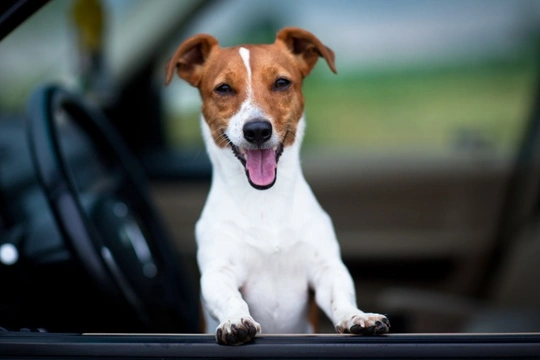
Stress Free Travel with your Dog
Some dogs simply love travelling in the car and will bound in excited for the journey ahead. For others, it can be a major cause of stress. We’ve written some tips on how to make travelling with your dog easier and stress-free.
Before the journey – Your dog
- Make sure you plan ahead. Take your dog for a walk and let them go to the toilet, it’ll help them to relax that little bit more.
- Do not feed your dog just before travelling. Allow at least two hours for their food to digest, this will also help to prevent motion sickness.
- If your dog does suffer from car sickness and you have a long journey ahead – visit your vet beforehand to organise a suitable medication.
- Always carry water and other supplies such a bedding, poo bags, leads and treats. Be prepared.
- If your dog becomes particularly stressed on journeys try DAP (Dog Appeasing Pheromones) which comes in either a travel calming spray or a collar which may help your dog feel calmer. Make sure you carefully read the instructions to gain the maximum benefit. Try placing an item of clothing that smells of you with them in the car to make them feel more secure.
- Can your dog can be easily identified? Most of us are now aware that it’s a legal requirement that all dogs should be microchipped. But are your contact details at the chip database are up to date? Furthermore, you must ensure your dog is wearing an identification tag. The Control of Dogs Order 1992 states;
'Any dog in a public place should wear the name and address of the owner inscribed on the collar or a nameplate/disc attached to it.'
It should include your surname and entire address or surname, the first line of your address and postcode.It needs to be legible as they can become difficult to read over time. So please do check your dog's tag... make sure its legal.
Before the journey – Your car
- Switch off the car airbag if your dog is secured in the front seat – it can cause more harm than good if it happens to inflate.
- It is now a legal requirement that your dog should be suitably restrained. As Rule 57 of the Highway Code states; ‘When in a vehicle make sure dogs or other animals are suitably restrained so they cannot distract you while you are driving or injure you, or themselves if you stop quickly. A seat belt harness, pet carrier, dog cage or dog guard are ways of restraining animals in cars. Although disobeying the Highway Code doesn't necessarily mean you will receive a penalty, the police could pull you over and charge you with driving without due care and attention. This carries a maximum fine of £2,500 and nine penalty points. It can also invalidate your car insurance.
- A dog that moves around can be a distraction for the driver and result in an accident. A sudden stop could cause your unrestrained dog to be thrown forward. A 32kg dog in a 30mph crash could be thrown with such sheer force that it would weigh the equivalent of 100kg. This canine cannonball could cause serious injury not only to itself but other passengers.
- There are three main ways to secure your dog; a seatbelt harness, dog crate or dog guard fixed in the boot of your car. Seatbelt Harness - If you are using a seatbelt harness, make sure you and your dog are familiar with it. Ensure it’s the correct size and he’s worn it before the journey. It may be worth practising securing it in the car and trying a few shorter trips in advance. Dog Guards – Should be large enough to allow your dog to stretch out and relax or sit up comfortably. Dog Crates / Baskets – If your dog is familiar with a crate at home and your car has space for it then it can help to ease your dog’s stress. However, make sure it is secure and cannot move about during the journey. If you are using a basket for a smaller dog, secure it in a footwell or on a seat with a seat belt and try to keep it level.
On the journey
- Drive slower and be more cautious. Pretend you are on your driving test or have a very important person in your car (which you have).
- Allow plenty of time for the journey so you are not rushing.
- Keep the car cool by using the air conditioning or the windows open a little. Baby shades to cover the windows are effective.
- Talk calmly and do not play loud music, keep your own stress to a minimum as your dog will pick up on it.
- Take regular breaks so you both can stretch your legs.
- Under no circumstances let your dog travel with its head hanging out of a window. Not only could they be hit by debris from roadside objects but they could try to jump out of the moving car.
- Never leave your dog alone in the car.
One more thing…
Are you also aware that should your dog escape from your garden and cause a road traffic accident or damage to another person and their property, and he is not insured you could be liable? Most pet insurance contains a third-party policy to cover for such eventualities. However, if your dog isn’t insured its best to take out a separate policy. By becoming a member of the ‘Dogs Trust’ for an annual fee of £25 your dog will receive third party insurance cover.
So, remember to plan your journey, restrain your pet appropriately, ensure your pet is identifiable and enjoy stress-free travel.
""



